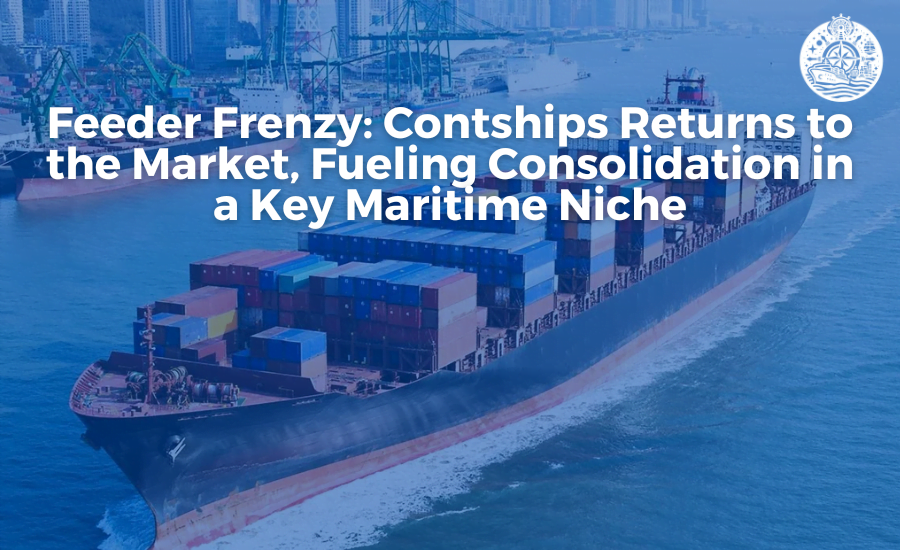
The feeder vessel market, crucial for connecting international shipping routes with smaller ports and terminals, is witnessing a wave of consolidation. Greece’s Contships Management, the world’s largest independent owner of feeder ships, recently re-entered the acquisition trail, snapping up the 966-teu Vega Scorpio. This move highlights the strategic importance of feeder vessels and raises questions about the future landscape of this dynamic maritime segment.
The Feeder Niche: A Vital Cog in the Global Trade Machine
Feeder vessels, typically ranging from 500 to 2,500 TEU (Twenty-foot Equivalent Unit) capacity, play a critical role in global trade. They bridge the gap between large container ships traversing major ocean routes and smaller ports lacking the infrastructure to handle them directly. This ensures efficient delivery of goods across diverse locations, feeding international trade arteries with vital cargo.
Contships, led by Nikolas Pateras, understand this significance well. With a fleet of 47 feeder ships after the Vega Scorpio acquisition, the company dominates the 900-1,500 TEU segment. This latest move follows a period of strategic inactivity, potentially indicating a renewed focus on feeder vessel consolidation.
Consolidation at Play: Shaping the Feeder Landscape
Several factors drive the consolidation trend in the feeder market:
- Economies of Scale: Larger fleets enable companies to optimize operations, negotiate better terms with suppliers, and achieve economies of scale. This leads to cost efficiencies and improved profitability.
- Market Fragmentation: The feeder market is traditionally fragmented, with numerous smaller players. Consolidation allows for greater control over market share and pricing power.
- Technological Advancements: Newer feeder vessels offer improved fuel efficiency and emissions reduction, requiring significant capital investment. Consolidation provides access to resources for such upgrades.
Companies like Contships believe these factors favor larger players, who can offer customers a wider network, greater reliability, and potentially lower rates. However, concerns exist about reduced competition and potential price hikes.
Challenges and Opportunities: The Road Ahead for Feeder Vessels
Despite the consolidation trend, several challenges remain for feeder operators:
- Port Infrastructure: Many smaller ports lack the infrastructure to efficiently handle larger feeder vessels, potentially limiting growth in certain regions.
- Fuel Price Volatility: Fluctuations in fuel prices can significantly impact operating costs, requiring flexible and efficient fuel management strategies.
- Environmental Regulations: Stringent environmental regulations, such as emissions reduction mandates, necessitate investments in greener technologies and operational changes.
Despite these challenges, opportunities abound:
- E-commerce Growth: The booming e-commerce sector drives demand for faster and more flexible cargo delivery, playing well into the feeder market’s strengths.
- Short-Sea Shipping Growth: Regional trade within continents is increasing, presenting opportunities for feeder vessels operating on dedicated routes.
- Technological Innovation: Advancements in autonomous navigation, data analytics, and alternative fuels promise greater efficiency and sustainability for feeder vessels.
Anchoring a Sustainable Future: The Role of Feeder Ships
Feeder vessels are vital links in the global trade chain, ensuring efficient cargo movement and connecting diverse economies. Consolidation plays a role in shaping the future of this sector, offering potential benefits and challenges. By navigating these complexities, embracing technological advancements, and prioritizing sustainability, feeder operators like Contships can contribute to a thriving and responsible maritime industry.









